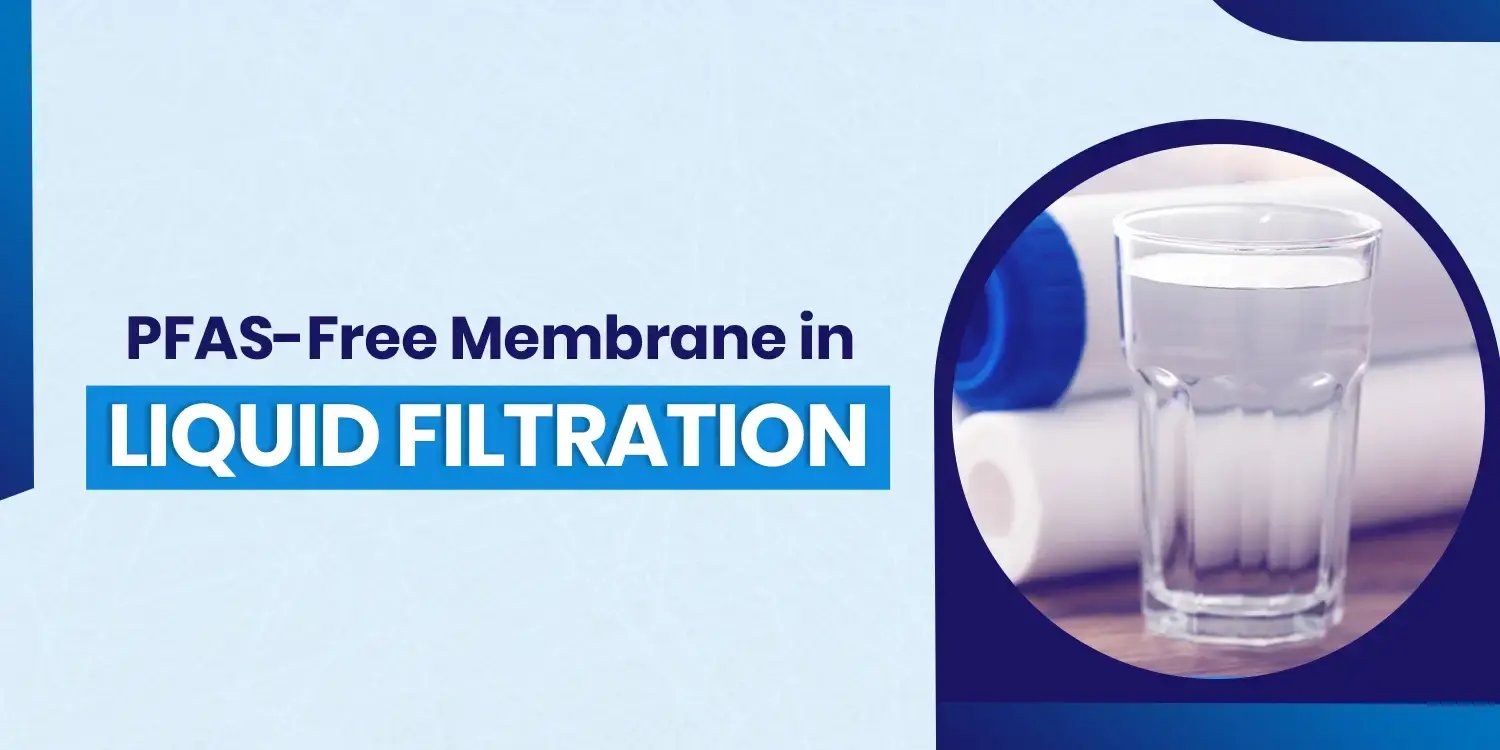
1. Introduction: Why PFAS-Free Matters in Liquid Filtration
A recent video by the YouTube channel Veritasium, titled “How One Company Secretly Poisoned The Planet,” reveals how a single company's decades-long use of PFAS led to widespread global contamination. It explains how these chemicals entered our water, soil, and bodies and why the health consequences are only now becoming clear. The scale of this crisis reinforces the urgent need for PFAS-free materials in filtration technologies.
You can watch the video here:
PFAS (per- and polyfluoroalkyl substances) are under growing scrutiny due to their persistence, bioaccumulation, and links to health concerns. While much of the conversation has focused on air and water contamination, PFAS-based materials are also widely used in liquid filtration systems including those designed to remove contaminants. As regulations tighten and consumer awareness grows, the need for PFAS-free alternatives in liquid filtration becomes increasingly urgent.
2. The Role and Limits of PFAS-Based Membranes in Liquid Filtration
PFAS-based membranes, particularly those made from PTFE and PVDF, have long been the industry standard across critical liquid filtration applications. Their exceptional chemical resistance, thermal stability, and durability have made them ideal for use in hydraulic fluid filtration, food and beverage processing, pharmaceutical manufacturing, and industrial wastewater treatment.
However, these benefits come with trade-offs. PFAS-based materials pose growing health and environmental concerns, especially in applications where cleanliness and safety are paramount. Additionally, the same properties that make these membranes robust such as their non-degradability are now seen as risks. With mounting regulatory pressure and the potential for PFAS shedding into filtered liquids, the filtration industry is reevaluating its heavy reliance on fluoropolymer membranes.
Compounding these concerns is the supply chain disruption for PFAS materials. Major manufacturers, including 3M, have announced plans to phase out PFAS production, tightening material availability and driving up costs. These shifts are accelerating the urgency for safer, more sustainable alternatives.
3. PFAS-Free Alternatives in Liquid Filtration
The move toward PFAS-free filtration is gaining momentum. Researchers and manufacturers are evaluating alternative polymers such as polyamides, polyacrylonitrile (PAN), polyesters, and in some niche applications, biodegradable biopolymers like PLA for use in membrane and filter development. While these materials often require additional optimization to match the chemical resistance of PTFE, they offer a pathway to safer, more sustainable filtration technologies.
In many cases, these alternatives exhibit favorable mechanical properties, biodegradability (in specific applications), and compatibility with emerging processing techniques like electrospinning. Moreover, their ability to be chemically modified or blended with other polymers allows for performance tuning across a wide range of filtration applications from low-pressure household systems to moderately demanding aqueous environments. These advancements are opening the door to tailored solutions that prioritize both performance and environmental safety.
What Makes Nanofiber Different?
Electrospun nanofiber membranes represent one of the most promising PFAS-free alternatives. The electrospinning process allows for a wide selection of polymers, enabling the design of membranes tailored for specific filtration needs. It is possible to produce nanofiber structures with submicron precision including filters rated at 0.1 microns while maintaining high permeability and low pressure drop.
Key advantages of electrospun nanofiber membranes include:
- Submicron precision: Enables fabrication of filters rated at 0.1 microns and below for fine particulate removal
- Versatility in polymer selection: Compatible with a wide range of PFAS-free materials such as PAN, PLA, Nylon, and cellulose derivatives
- High surface area: Increases contact with contaminants, improving capture efficiency
- Tunable pore size distribution: Enables precise control over filtration performance
- Low pressure drop: Supports energy-efficient operation in both low- and high-flow systems
These filters are being explored in a variety of applications including drinking water purification, oil-water separation, biopharma process filtration, dye and pigment removal, and household point-of-use systems. Their flexibility, material compatibility, and scalability make them attractive candidates for innovation across sectors.
5. The Road Ahead
While promising, PFAS-free nanofiber membranes still face challenges. These include improving chemical and thermal resistance, mitigating fouling over time, and scaling up production while maintaining quality. Some high-performance polymers such as polyimide (PI), thermoplastic polyurethane (TPU), and PDMS-based composites have already been electrospun into nanofiber membranes, offering enhanced thermal stability, elasticity, and chemical resistance.
Despite the hurdles, regulatory momentum and shifting market demands are accelerating the move toward PFAS-free innovation.
Final Thoughts
The transition to PFAS-free membranes in liquid filtration is more than a regulatory necessity it’s an opportunity to evolve. Electrospun nanofiber technology offers a path that balances performance, safety, and sustainability. As this shift gains momentum, we have a chance to reshape filtration to better serve public health, industry needs, and environmental integrity.
Interested in exploring PFAS-free nanofiber solutions for liquid filtration? Visit Matregenix to learn more.
